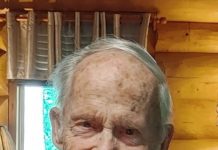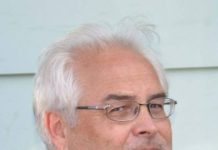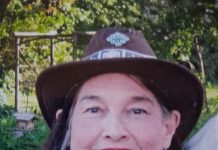No trip to the North Bruce Peninsula is complete without a stop at the Grotto. For a writer, hiking there is more than a must-do; it’s a mirror of the writing process itself.
On Friday, September 19, five writer friends and I hiked the Grotto. The trip was a way to see the beauty of the North Bruce Peninsula while getting to know one another better. What brought us together was a weekly coworking session in a Toronto café, where we’d say hello, open our laptops, and get to work. Some of us are career writers, others use writing in our professions, and a few are reviving long-abandoned passion projects. Though we could easily work at home, sitting together in solitude makes us more productive. It’s also a weekly commitment to our projects.
After a year of these sessions, I invited my new friends to a self-directed writing retreat at my home on the Bruce Peninsula.
Hiking to the Grotto reminded me of the writing process. First comes the planning: brainstorming logistics, deciding who will go and when. There are also practical things to manage, such as Bruce Peninsula National Park’s infamous registration process which requires your license plate and the exact number of people in your vehicle. Much like starting a draft, the trek truly begins on arrival, when you choose your route—the easier or more arduous path—just as a writer decides whether to outline or dive straight in. Once we started, I noticed our steps, like our prose, could be quick or languid, purposeful or aimless.
As we walked the trail, we moved as a unit, before splintering into small clusters. At Indian Head Cove, some of us descended the cliffs while others looked down from above, marvelling at the rock formations. I thought about how, in writing, we sometimes take chances or play it safe depending on context, comfort, and mood. We lingered longer than we should have, and soon realized a friend was missing. He couldn’t be far, but for a moment we worried when we called his name, and he didn’t respond. Moments later, his tall frame emerged amid the dense forest along the trail. He had taken a wrong turn and retraced his steps. This moment reminded me how we sometimes feel temporarily lost when writing. A thought carries us forward, then falters, leaving us unsure if the idea is a dead end. Yet if we stay calm and committed, the solution often appears.
Having lost time, we quickened our pace to reach the Grotto. Pacing also matters in storytelling; it’s what keeps the narrative moving and the reader engaged. When we couldn’t spot any white blazes, we flagged down a Parks employee, who happened to be driving by, for directions. This, too, was reminiscent of writing. Sometimes you need an editor or fellow writer to offer guidance and perspective.
Finally, we arrived. The crystal-clear turquoise water looked as it did in pictures, only more stunning. As I considered how cold the water must be, despite its Caribbean appearance, I reflected on how writing is not always what it seems. Unless you’re collaborating, writing is mostly a solitary act, though sharing your work allows for connection.
When it was time to head back, we debated which route to take. We were hungry and eager to begin writing. We decided to “trim” our original plan by taking the shorter and easier path—just like a writer tightening a bloated or meandering draft. On the way to the parking lot, we enjoyed a final snack and bathroom break before driving home. (Snacks and trips to the loo, too, are a vital part of the writing process.)
Later, three more friends arrived at the house, and we all began writing in earnest while taking turns preparing meals. The days were productive and relaxing all at once.
A retreat in a glorious setting like the Bruce Peninsula is ideal for turning inward; the quiet, open space is conducive to thought. Writing, like hiking the Grotto, is as much about the process as what you learn along the way.
Nancy Dutra












